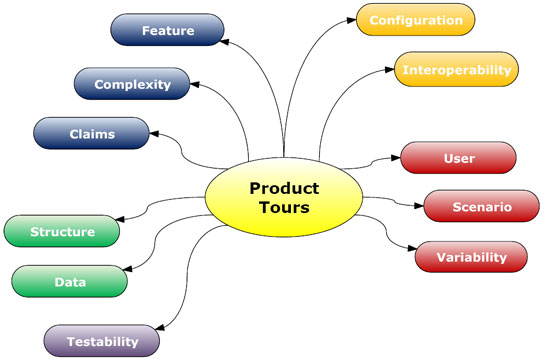Mike Kelly has created an effective software testing mnemonic based around James Bach’s software touring heuristic. It is now burned indelibly on my brain: FCC CUTS VIDS. I think Mike hit a home run with this one – I use it a lot myself. The mnemonic makes more sense when you review Mike’s excellent explanation, and when he spells out the mnemonic into a list:
Feature tour
Complexity tour
Claims tour
Configuration tour
User tour
Testability tour
Scenario tour
Variability tour
Interoperability tour
Data tour
Structure tour
Like all good mnemonics, it is easy to memorize because it evokes familiarity, imagery, and it has a nice cadence. I should qualify that. It is easy for /me/ to memorize, and of course, as the creator, easy for Mike to memorize. I relate to words and lists, and a nice cadence helps me repeat it silently to myself, in English, the language I tend to think in. My friend Steve, one of the smartest people I know, does not have as much self-talk going on in his brain. He doesn’t relate much to lists and words, he relates to images and colors much more than I do. He thinks in pictures more than words. If I were teaching Steve the touring heuristic, and hoped he’d memorize it, I’d take a different tack.
To explore Mike’s test heuristic in an alternate form, I created the following image, in the form of a mind map, as an example:
This image is a model my friends who think more in terms of images and colors might be more comfortable with than a list.
As I look at it, I see some cool side effects. As a mind map, it looks unfinished. This is partly by design; I didn’t expand any of the idea points as you normally would, and there is a blank spot at the bottom right hand corner, an area that our eyes are naturally drawn to as we scan an image.
Contrast the image with the list above. In the list, I get a sense of completion – each letter of the mnemonic is spelled out. When I get to the final “S”, standing for “Structure Tour”, I get a sense of satisfaction. The spelling out of the mnemonic is complete. When I look at the image, I am struck by how unfinished it looks. I want to draw it on a whiteboard and expand each idea bubble. I want to fill in that blank spot at the bottom right-hand corner. I want to explore the heuristic further, and I want my image to be symmetrical so I can easily remember the details by the shape and colors in the model.
My next urge is to re-create the mind map using only images instead of text. That would be an interesting experiment. Next, I want to convert the list into a tree diagram, with all the relevant testing ideas I can fit under each item. A tree diagram is also an effective way to quickly spot areas that need to be expanded. This appeals to my pragmatic testing approach – more analysis can help me be that much more thorough the next time I use the mnemonic when testing.
Different models help us look at problems differently, and they will reveal or obscure different information and ideas. As my father taught me years ago, involving all your senses when learning is effective. I constantly analyze my own models, and try to improve on my technique. If a model is getting stale, all I need to do is change the medium, and something extraordinary usually clicks in my brain as a result.
What do you see in the image and list above? Do they evoke different reactions in your mind? How would you model Mike’s mnemonic? What tools would you use, and what would you learn about testing and thinking by employing them? How many of you would write a song to accompany it? There’s only one way to find out. Model away.
*Thanks to Sherry Heinze for reawakening my interest in mind maps.
